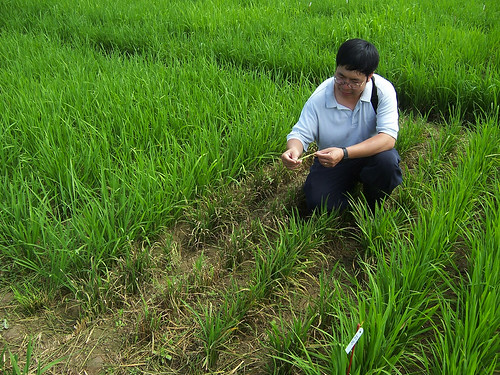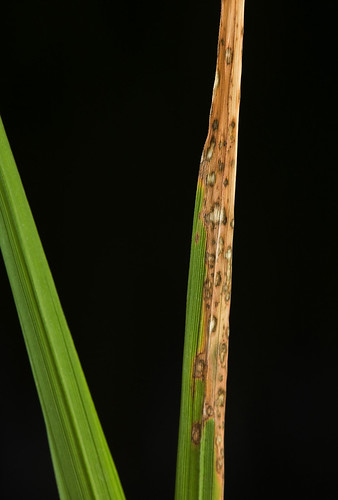
This post is part of the Science Tuesday feature series on the USDA blog. Check back each week as we showcase stories and news from USDA’s rich science and research portfolio.
As a plant pathologist with USDA’s Agricultural Research Service (ARS) Rice Research Unit in Beaumont, Texas, Toni Marchetti oversaw a new program in 1972 to develop new cultivars that better resisted costly diseases like rice blast.
Marchetti retired from ARS in 2001, leaving behind not only a legacy of excellence in rice breeding and plant pathology, but also a prized collection of 1,000 rice blast specimens he isolated from Texas, Arkansas, and other rice-growing states. The Beaumont unit was closed in 2012, and the collection was relocated to ARS’s Dale Bumpers National Rice Research Center in Stuttgart, Arkansas.
There, ARS research plant pathologist Yulin Jia has managed Marchetti’s legacy collection while conducting his own research on rice blast genomics. This is no easy feat considering the fungus that causes rice blast, Magnaporthe oryzae, has a tendency to mutate when cultured in the lab, resulting in new races with a different genetic makeup.
To get around the problem, Jia devised a new procedure for storing rice blast spores on filter paper strips at extremely cold temperature—minus 20 degrees Celsius. Using the new approach, he expanded the collection to 1,800 total rice blast specimens, allowing him to compare genetic changes in specimens Marchetti obtained as far back as the 1950s to specimens that he collected.
Despite this success, a gnawing worry remained. “My nightmare has always been that my freezer with fungi will lose power,” says Jia. “If this were to happen, then all of these genetic resources would be lost.”
So last summer, Jia contacted the ARS National Center for Genetic Resources Preservation (NCGRP) in Fort Collins, Colorado, about establishing a backup collection there using duplicate specimens from Stuttgart. The Center agreed, and Jia prepared the spores for 629 duplicates of Marchetti’s specimens for back-up storage—and more submissions are planned.
Jia and research leader Anna McClung’s desire to preserve the rice blast collection underscores a broader issue facing research institutions the world over: the potential loss of valuable germplasm to personnel departures, budgetary constraints, natural disasters, contamination, or other unforeseen events.
“The relevance of this pathogen collection for rice blast is that it may offer opportunities to determine if the pathogen changes over time—for example, in response to climate change—or to do other sorts of population genetics studies,” says McClung.
Preserving this collection is critical for having potential solutions to developing new rice varieties that are resistant to this costly disease.



